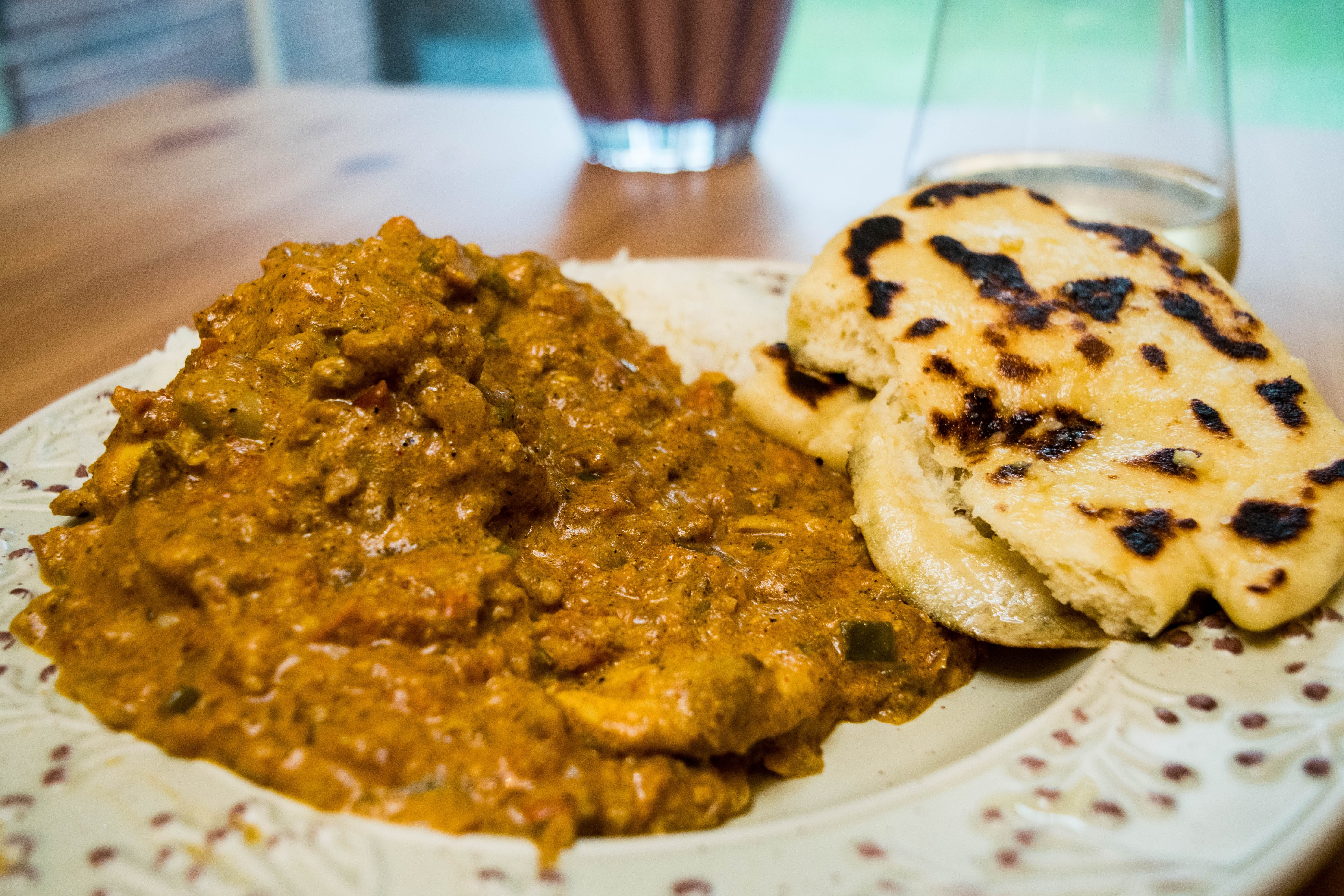When asked, “What Is The National Food Of England?”, many might immediately think of quintessential British staples like fish and chips, a full English breakfast, or perhaps a comforting shepherd’s pie. While these dishes undoubtedly hold a special place in British cuisine, the surprising answer, according to popular vote, is Chicken Tikka Masala. This unexpected choice sparks curiosity and invites a deeper exploration of England’s culinary landscape and its multicultural influences.
The Rise of Chicken Tikka Masala: A Culinary History
Chicken Tikka Masala’s journey to becoming a national favorite is a fascinating tale of cultural exchange and adaptation. While its exact origins are debated, most food historians agree that the dish was popularized by the South Asian community in Great Britain. It’s believed to have evolved from traditional Indian recipes, with a creamy tomato-based sauce tailored to suit British palates.
Some speculate that it originated in the Punjab region, but the modern preparation heavily relies on ingredients readily available in Western countries. This blend of Eastern inspiration and Western adaptation has made Chicken Tikka Masala a unique and beloved dish in England.
Beyond Stereotypes: A Look at Traditional British Cuisine
While Chicken Tikka Masala reigns supreme in popularity, it’s important to acknowledge the diverse range of traditional British foods. From hearty meat pies to comforting stews, British cuisine offers a rich tapestry of flavors and textures.
- Fish and Chips: A classic takeaway dish consisting of battered and deep-fried fish served with chips (thick-cut fries).
- Full English Breakfast: A substantial morning meal featuring bacon, eggs, sausages, baked beans, tomatoes, mushrooms, and toast.
- Shepherd’s Pie: A savory pie made with minced lamb topped with mashed potatoes.
- Roast Dinner: A traditional Sunday meal consisting of roasted meat (usually beef, lamb, chicken, or pork), roasted potatoes, vegetables, and gravy.
These dishes represent the heart of British culinary heritage, showcasing the country’s historical reliance on locally sourced ingredients and hearty, comforting flavors.
Reinterpreting British Identity Through Food
The embrace of Chicken Tikka Masala as England’s national food reflects a broader shift in the country’s culinary identity. It symbolizes a willingness to embrace multiculturalism and celebrate the diverse culinary influences that have shaped British cuisine.
Rather than clinging to outdated stereotypes, the popularity of Chicken Tikka Masala showcases a modern and inclusive approach to food, acknowledging the contributions of various cultures to the nation’s culinary landscape.
A Recipe for Success: Cooking Chicken Tikka Masala
Many variations exist, each offering a unique twist on this beloved dish. This recipe is inspired by Swasthi’s Recipes.
Ingredients:
- Chicken thighs, cut into bite-sized pieces
- Yogurt, for marinating
- Ginger-garlic paste
- Spices: turmeric, cumin, coriander, garam masala, chili powder
- Onions, chopped
- Tomatoes, diced or pureed
- Cream or coconut milk
- Ghee or oil
- Fresh coriander, for garnish
Instructions:
- Marinate the chicken in yogurt, ginger-garlic paste, and spices for at least 30 minutes, or preferably overnight.
- Sauté chopped onions in ghee or oil until golden brown. Add ginger-garlic paste and cook until fragrant.
- Add diced tomatoes and cook until softened. Stir in the spice blend and cook for a minute.
- Add water and let the sauce simmer until it thickens. Stir in cream or coconut milk for richness.
- Grill or bake the marinated chicken until cooked through. Add the chicken to the sauce and simmer for a few minutes.
- Garnish with fresh coriander and serve hot with basmati rice or naan bread.
A Culinary Conclusion: Celebrating Diversity Through Food
The story of Chicken Tikka Masala as England’s national food is a testament to the power of cultural exchange and the evolving nature of culinary identity. It’s a dish that represents the best of both worlds, blending Indian flavors with British preferences to create a truly unique and beloved culinary creation. So, the next time you ponder, “What is the national food of England?”, remember that the answer is more than just a dish; it’s a reflection of a nation’s diverse and dynamic culinary landscape.

